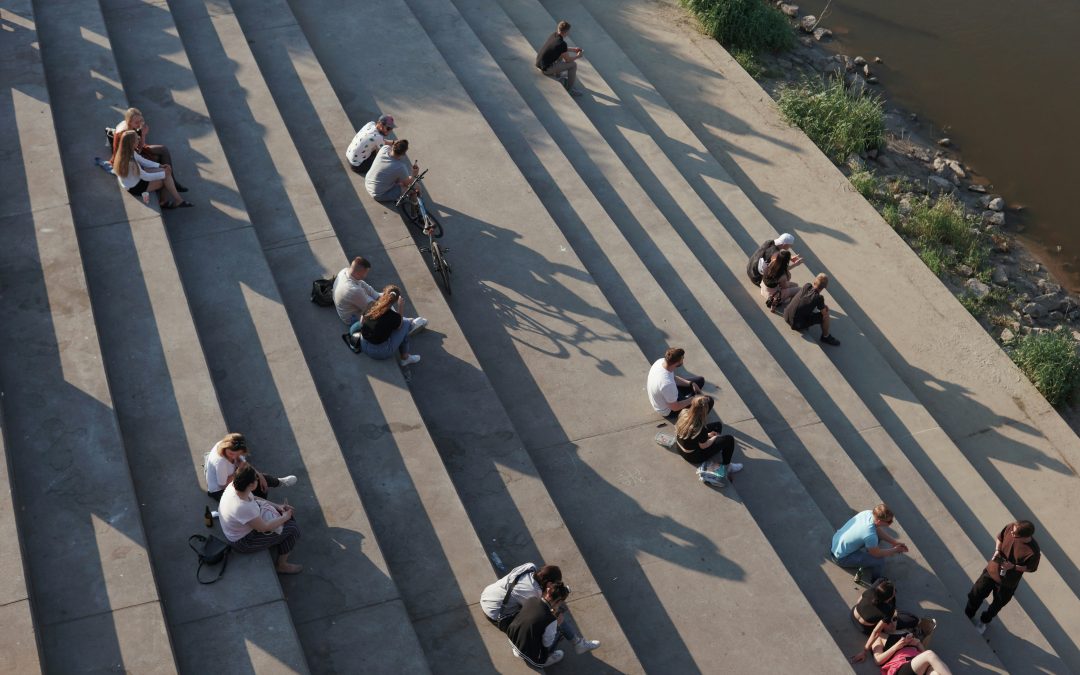We recently hosted the fourth instalment of our community of practice series designed to support development practitioners navigating difficult social, economic, and political circumstances. Having previously explored issues such as personal resilience, organisational toxicity, and the vital role of hope in combatting despair, we turned our attention to the importance of social cohesion in building resilient communities and organisations prepared to navigate adversity.
As ever, Natalie Cunningham, Senior Lecturer in Leadership for Development at GDI, facilitated the discussion alongside Louisa Hann, Research Communications Officer at the institute. Natalie started by considering what social cohesion means across different contexts, especially given its multiple and contested definitions.
What is social cohesion?
At the most basic level, social cohesion describes the extent to which a society benefits from belonging, trust, and mutual support between members. Highly cohesive societies tend to enjoy less conflict, increased cooperation, greater economic prosperity, and better mental and physical health than those with low levels of social cohesion. Of course, the quality and shape of relationships within a society can differ widely, with scholars offering different analyses of the ways in which cultural diversity, economic inequality, and social policies can impact the social fabric.
Natalie provided a few differing definitions produced by authoritative voices and institutions. A recent discussion paper by The German Institute of Development and Sustainability (IIDOS), for example, argues that social cohesion incorporates two dimensions – a horizontal dimension encompassing relationships between individuals and groups within a society and a vertical dimension encompassing relationships between individuals, groups, public institutions, and the state more broadly. In socially cohesive societies, such relationships involve trust, an inclusive sense of identity, and cooperation for the common good.
Another definition by the Social Cohesion Hub identifies three dimensions affecting social cohesion – inequality, trust, and identity – which together make up the Social Cohesion Index (SCI). Rather than relying on objective measures such as GDP per capita to establish levels of prosperity and social cohesion, the SCI embraces a perceptions-based to social cohesion that prioritises perceived levels of inequality and trust within a society. Perceived inequities – regardless of their quantitative basis – can erode trust between people and harm community resilience. As such, nurturing social cohesion requires understanding, accommodating, and grappling with people’s worries and concerns, on top of efforts to redress material imbalances.
What factors can complicate social cohesion?
Clearly, the benefits of social cohesion are vital in sustaining resilient communities and organisations prepared to face the challenges of the twenty-first century. However, as participants discussed throughout the community of practice, there are many factors that can make social cohesion very challenging, from longstanding conflict between groups to increasingly atomised societies.
Participants joining from around the world shared first-hand stories of conflict and tension in their different regions and contexts, agreeing that improving social cohesion requires more than short-term measures or purely economic solutions.
The theme of identity also came up several times during the discussion, with participants emphasising its power both to bring people together and create sharp social divisions. While a sense of shared identity can foster mutual understanding and incentivise people to cooperate, it can also create a politics of exclusion that can erode the social fabric. As such, nurturing social cohesion through identity-based strategies requires careful consideration and an acknowledgement of the equal worth of all people.
How can we foster social cohesion in organisations and wider society?
Despite the complexity of social cohesion, participants shared inspiring stories of shared humanity and connectedness. From enjoying cross-cultural activities such as music and dancing to helping neighbours and sharing food, even small gestures can break down tough walls and encourage cooperation. So, an important factor to consider is how we facilitate these opportunities for connection in a world that to many people seems lonelier than ever. While we wrapped up the community of practice with more questions than we answered, clarifying the importance of these questions felt like a vital step in our work on resilience.
Join us for our next community of practice
Our next community of practice (and our final session of 2025) is taking place on Tuesday, December 16th. We’ll be focusing on how different types of resilience are connected, and how such connectedness can generate impactful changes within a development context. As ever, all are welcome to join, regardless of whether you’ve attended a previous community of practice. We’ll also be hosted sessions at 8am and 2pm UK time to accommodate participants across different time zones.
Image by Kateryna Ivanova on Unsplash.
Note: This article gives the views of the author/academic featured and does not necessarily represent the views of the Global Development Institute as a whole
Please feel free to use this post under the following Creative Commons license: Attribution-NonCommercial-NoDerivatives 4.0 International (CC BY-NC-ND 4.0). Full information is available here.

